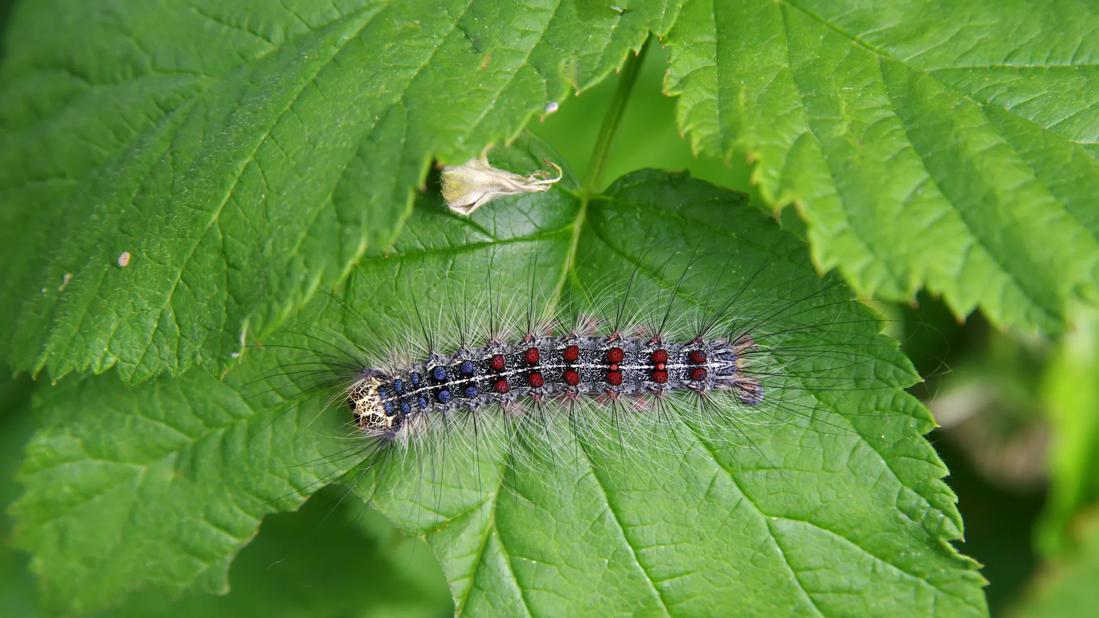They may seem cute, but toxins released by certain kinds of caterpillars can leave you feeling itchy or worse

Don’t be lured by the cuteness of a fuzzy caterpillar inching across your path in its adorable way. Picking up one of those little critters may be a decision that you (and your skin) quickly regret.
Advertisement
Cleveland Clinic is a non-profit academic medical center. Advertising on our site helps support our mission. We do not endorse non-Cleveland Clinic products or services. Policy
Emergency medicine specialist Christopher Bazzoli, MD, explains why it’s often better to admire these adorable insects with your eyes and keep your hands to yourself.
Caterpillars can munch on things, as anyone who has read the children’s classic The Very Hungry Caterpillar knows. But don’t expect them to cause trouble by chomping down on your finger.
They don’t really have teeth. Instead, caterpillars have two mouthparts called mandibles that they use to chew on leaves and other yummy bits of plants.
Tufts of bristly hair can make a caterpillar seem like a living stuffed animal. But the reality behind those hairs isn’t always so cuddly.
The spike-like hairs in about 150 caterpillar species worldwide (50 in the United States) are actually quills connected to poisonous sacs, explains Dr. Bazzoli. Touch these hairs and they may break off in your skin and release a tiny dose of toxin.
It’s a defense mechanism that caterpillars deploy to avoid being attacked and manhandled by much larger creatures. (In this case, you.)
Reactions to caterpillar stings usually stay on the mild side, notes Dr. Bazzoli. On the scale of insect bites, it normally rates as more troublesome than a mosquito bite but not as bad as a wasp sting.
Advertisement
Your body’s response to caterpillar venom may lead to a rash and skin conditions that can last anywhere from a few hours to a few days. Symptoms could include:
A more serious allergic reaction — including shortness of breath and difficulty swallowing — could develop if you touch your eyes or mouth after handling a caterpillar. There have even been rare reports of anaphylactic reactions.
Interactions with certain venomous caterpillars also can lead to more serious issues such as brain bleeding (intracranial hemorrhage), kidney damage, slurred speech (dysarthria) and loss of coordination (ataxia).
So, what’s your first move following the OUCH moment? (After expressing regret for not leaving the caterpillar alone, of course.) Let’s walk through some basic at-home treatment steps to offer relief:
If at-home treatments don’t ease caterpillar rash symptoms and issues escalate — think extreme swelling or difficulty breathing — Dr. Bazzoli recommends talking to a healthcare provider right away or seeking medical attention to be safe.
Nature often color codes dangerous creatures, painting them with bright hues that stand out as a warning sign to others in the ecosystem.
But when it comes to fuzzy caterpillars, those markings often signal something else to people: Pick it up and check it out. That curiosity can come with a cost, as many cool-looking stinging caterpillars reside in the United States.
The pain-inducing roster in the United States includes the:
Advertisement
The world’s most venomous caterpillar — Lonomia obliqua — lives in South America, primarily in Brazil. It’s sometimes called the “assassin caterpillar” given the deaths it has caused over the years.
But again, venomous caterpillars are a rarity among the more than 165,000 caterpillar species in existence. The vast majority of these cute crawlers are harmless. (Here’s looking at you, Mr. Woolly Bear.)
The best rule to follow? “Let caterpillars be,” advises Dr. Bazzoli. “In general, it’s a good rule for all of us to follow — and I’m guessing the caterpillars will appreciate it, too.”
Advertisement
Learn more about our editorial process.
Advertisement

Alpha-gal syndrome has become more common and is a leading cause of anaphylaxis

These red, raised bites often show up in a zigzag pattern on areas of your skin that come into contact with bedding

Twice daily tick checks, the right bug sprays and long pants can help you prevent tick-borne diseases

Bug bites create tiny openings in your skin that can let in dangerous bacteria

Using insect repellent, covering up and keeping your property dry can help keep the buggers at bay

Kissing bugs are insects that can carry a dangerous parasite that causes Chagas disease

Whether you scrape or pull out the stinger, the key is to do it quickly

Some bites are nothing more than itchy — others can put you at risk for disease

If you’re feeling short of breath, sleep can be tough — propping yourself up or sleeping on your side may help

If you fear the unknown or find yourself needing reassurance often, you may identify with this attachment style

If you’re looking to boost your gut health, it’s better to get fiber from whole foods